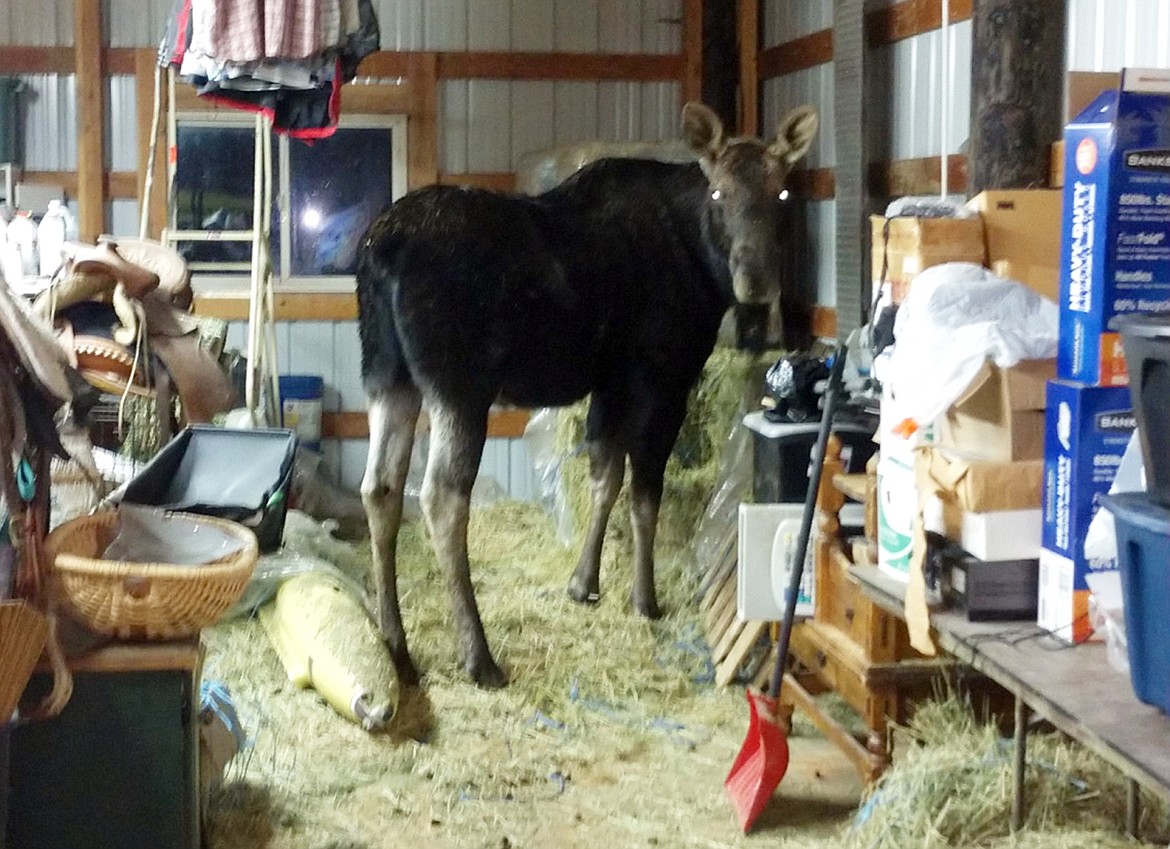'Sometimes they have to make the tough call'
Hank Worsech is the director of Montana Fish, Wildlife and Parks. This story was originally written for Montana Outdoors Magazine.
In late November of last year, Montana Fish Wildlife and Parks game wardens were forced to euthanize a moose that had spent the previous weeks limping around midtown Billings. The young bull appeared sick, struggled to walk and was obviously in extreme pain.
Our wildlife health experts determined that it likely wouldn’t survive being tranquilized and relocated to the wild. A necropsy later determined that the bones in both front feet had degenerated, probably because of a severe infection.
“That’s not something that would ever heal and would only have gotten worse, causing even more pain,” FWP veterinarian Dr. Jennifer Ramsey said.
As is often the case when the department has to kill a moose, bear, mountain lion, aggressive buck or other big game animal, we took some flak.
Some people thought we should have left the moose alone and let nature take its course. Others wanted us to return the young bull to the wild or send it to a zoo. Some hunters even said they should have been allowed to hunt the moose — in downtown Billings.
Deciding what to do when large wild animals enter populated areas, especially those that are sick or pose a risk to human safety, is one of the hardest things we do in this department. We spend so much time and effort keeping wildlife populations healthy and strong that it’s heartbreaking to have to euthanize an animal.
But it’s our responsibility to make those decisions.
When we receive a report of a big game animal in an area where it shouldn’t be, we foremost must determine if it poses an immediate threat to human safety, like a grizzly that has broken into an occupied cabin; a potential threat, like a young male mountain lion moving through a subdivision; or only a marginal threat, like a wolf cruising past a distant farmhouse at night.
If the animal isn’t an immediate threat, we often do nothing other than monitor its movements. For example, moose and black bears that might prove difficult to capture or even find after an initial report usually leave or disappear from developed areas on their own, resolving the situation themselves.
But if they don’t, and there seems to be a potential threat, we have to determine if it’s possible to remove or capture the animal and relocate it in the wild. That’s far easier said than done. Even if a game warden makes a perfect shot with a tranquilizer rifle, the drug could cause a heart attack or cause the animal to stumble and break a leg.
Once the animal is down, our people then have to carefully calculate their approach. How do you know when it’s safe to walk up to a sedated grizzly and load it into a trailer for transport? Our wardens and bear specialists have to decide that all the time.
Then there’s figuring out where to relocate an animal. We don’t want to put it where it will just create more problems. Nowadays people live in almost all the accessible mountains and foothills that wildlife call home.
And the undeveloped areas? Grizzlies and wolves, especially, leave those places because the habitat is full and others of their species push them out. There just aren’t many vacancies anymore.
As for zoos, we occasionally send an animal to an accredited facility where we are certain that conditions are humane. But most zoos are full and only rarely have room for another bear, moose or cougar.
Yet another issue is disease, especially chronic wasting disease. Because we’re concerned about spreading this deadly wild cervid disease, we don’t relocate any dangerous, nuisance or orphaned deer or elk. And any wild animal brings its parasites, viruses and bacteria with it, increasing the risk of introducing diseases to other wildlife populations, livestock and even people.
As for allowing hunters into a residential or business area to shoot a limping moose or a bear feeding from a dumpster? I’m sorry, but no.
Not only would that break local laws prohibiting hunting or discharging a firearm within city limits, it would also pose far too great a risk to public safety — not to mention going way beyond the limits of ethical fair chase hunting.
FWP employees care deeply about Montana’s wildlife. That’s why they entered the wildlife conservation field in the first place. But sometimes they have to make the tough call that results in an animal’s death. I don’t envy the game wardens, biologists or veterinarians who have to put down a moose — or any other wild animal.
But I know they do it only when there’s no other safe, healthy or feasible alternative.

